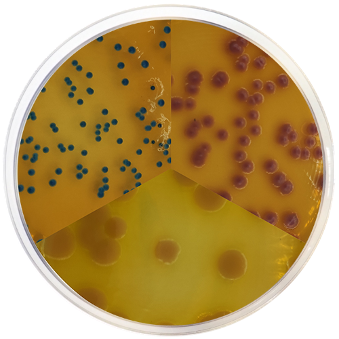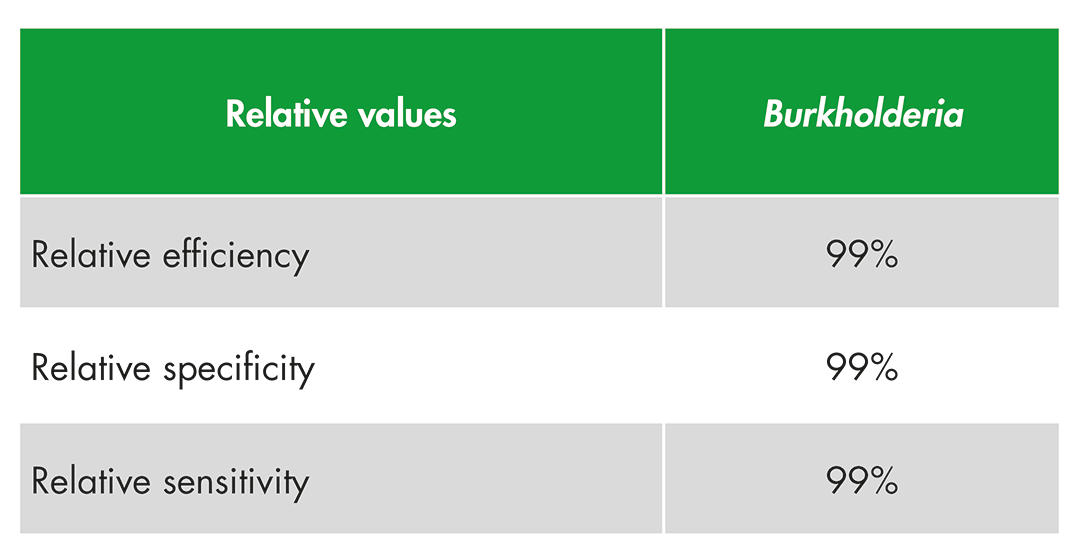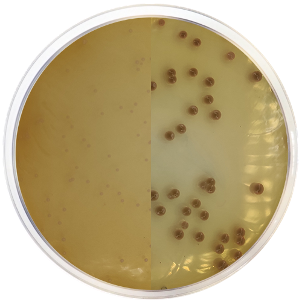Published: 23/09/21 14:48 Categories: Microbiology
Cosmetic industry products present the perfect conditions for the survival and growth of certain pathogens, which makes strict control over them very necessary, as is dealt with in our cosmetics newsletter. Current legislation establishes these four microorganisms as mandatory reporting within this industry: Candida albicans, Pseudomonas aeruginosa, Escherichia coli and Staphylococcus aureus. There are ISO detection method references for all of them, generally developed over four phases:

Following the traditional reference protocol, it generally takes between 5 and 8 days to carry out the whole process for any of these microorganisms.
Condalab, seeing the opportunity to be offered at the market, launches a new chromogenic culture medium that facilitates the simultaneous detection of three of the four pathogens mentioned above.
Using the new CondaChrome® PEC, both quality control and sample analysis in the cosmetics industry are greatly simplified, drastically reducing the time spent on the process and the techniques to be used, since not only P. aeruginosa, E. coli, and C. albicans are detected at the same time, but also in a single culture medium, which shows excellent relative values of sensitivity, effectiveness and specificity for all three pathogens:

Compared to the reference methods, with CondaChrome® PEC, the analysis time is shorter in all three cases, with the product control being done in an interval of 3 to 5 days, resulting in a time saving of up to one working week.
Last but not least, being a chromogenic medium, it greatly facilitates identification tasks. This is because, selectively, only target pathogen colonies will grow and each species has a very distinct color and shape.

Protagonists... and emerging pathogens
Even with the enormous importance of the four above-mentioned pathogens in this industry, it should be remembered that they are not the only ones capable of contaminating these products. Among these microorganisms, a newly emerging pathogen stands out: Burkholderia cepacia.
This Gram-negative, aerobic, catalase-positive bacteria is capable of surviving in a wide variety of environmental conditions, including distilled water with a nitrogen source, given its ability to fix CO2. Because of this, its presence in cosmetics is very plausible, given its sugar content and generally slightly acidic pH. Hence, the need to confirm its absence in these products.
In fact, Burkholderia is becoming known for its opportunistic infections, especially in people with immunocompromised systems.
Therefore, its detection is beginning to be of considerable necessity, but are there standardized methods for detecting emerging microorganisms? To this end, Conda breaks the mold and presents its chromogenic for the specific detection of Burkholderia.
Condachrome® Burkholderia
It is a chromogenic medium that presents great competitive advantages demonstrated in its validation process, showing very important relative values of sensitivity, specificity and effectiveness.

All this without forgetting the characteristic advantages of a chromogenic medium: speed, simplicity and performance.

If you would like to know more about these new CondaChrome® media and its validation, you are invited to watch the CondalabTalk that we have made, together with AINIA, on the subject.

 Food fraud: How do we detect it?
Food fraud: How do we detect it?
 Visit Us at MEDICA 2025 – Discover Our Precise Detection Solutions
Visit Us at MEDICA 2025 – Discover Our Precise Detection Solutions
 PCR: The Technique Revolutionizing Rapid Detection in the Food Industry
PCR: The Technique Revolutionizing Rapid Detection in the Food Industry
 How Culture Media Ensure the Safety, Efficacy, and Quality of Medicines
How Culture Media Ensure the Safety, Efficacy, and Quality of Medicines
 Meeting us at MEDLAB MIDDLE EAST 2025
Meeting us at MEDLAB MIDDLE EAST 2025